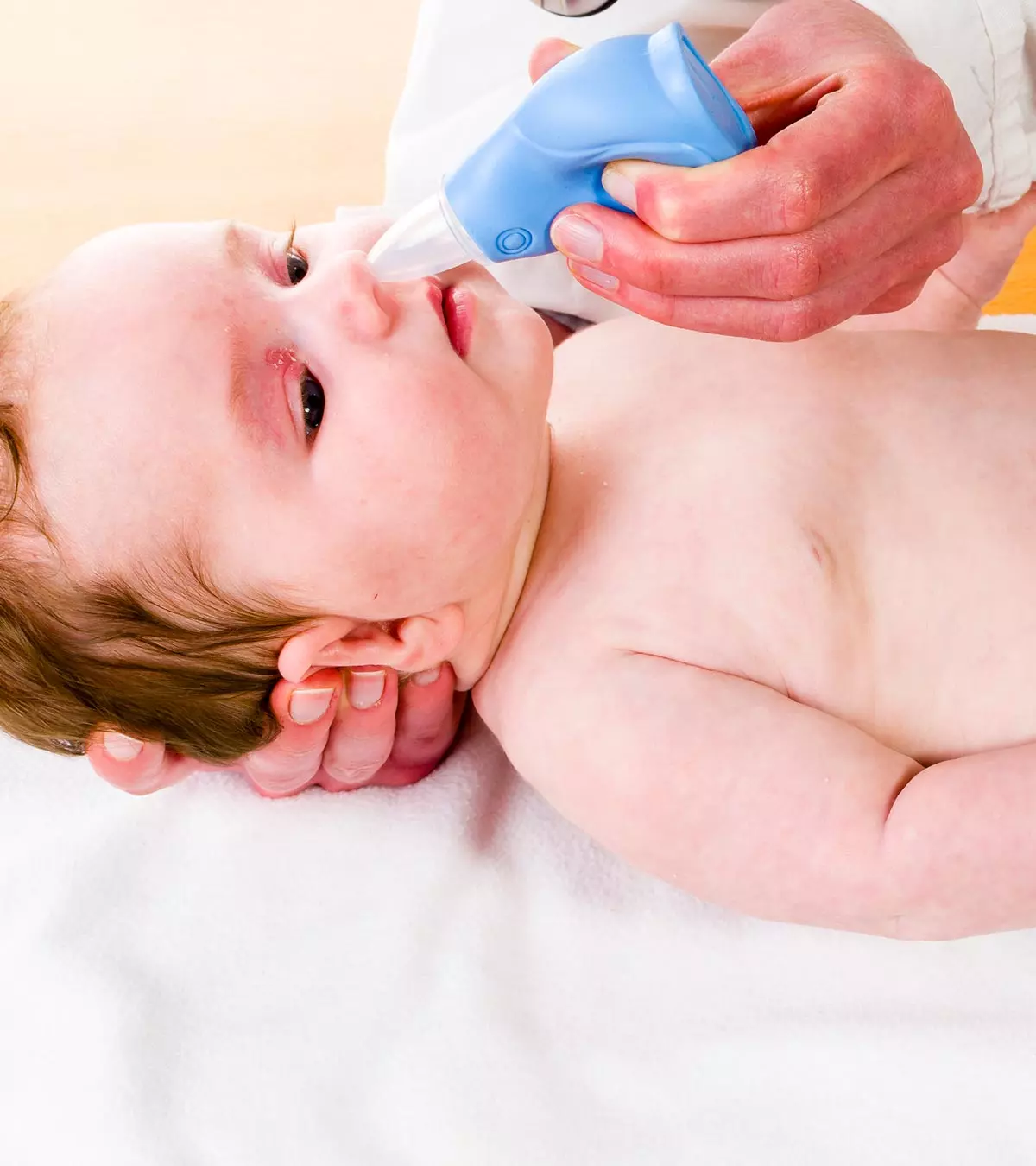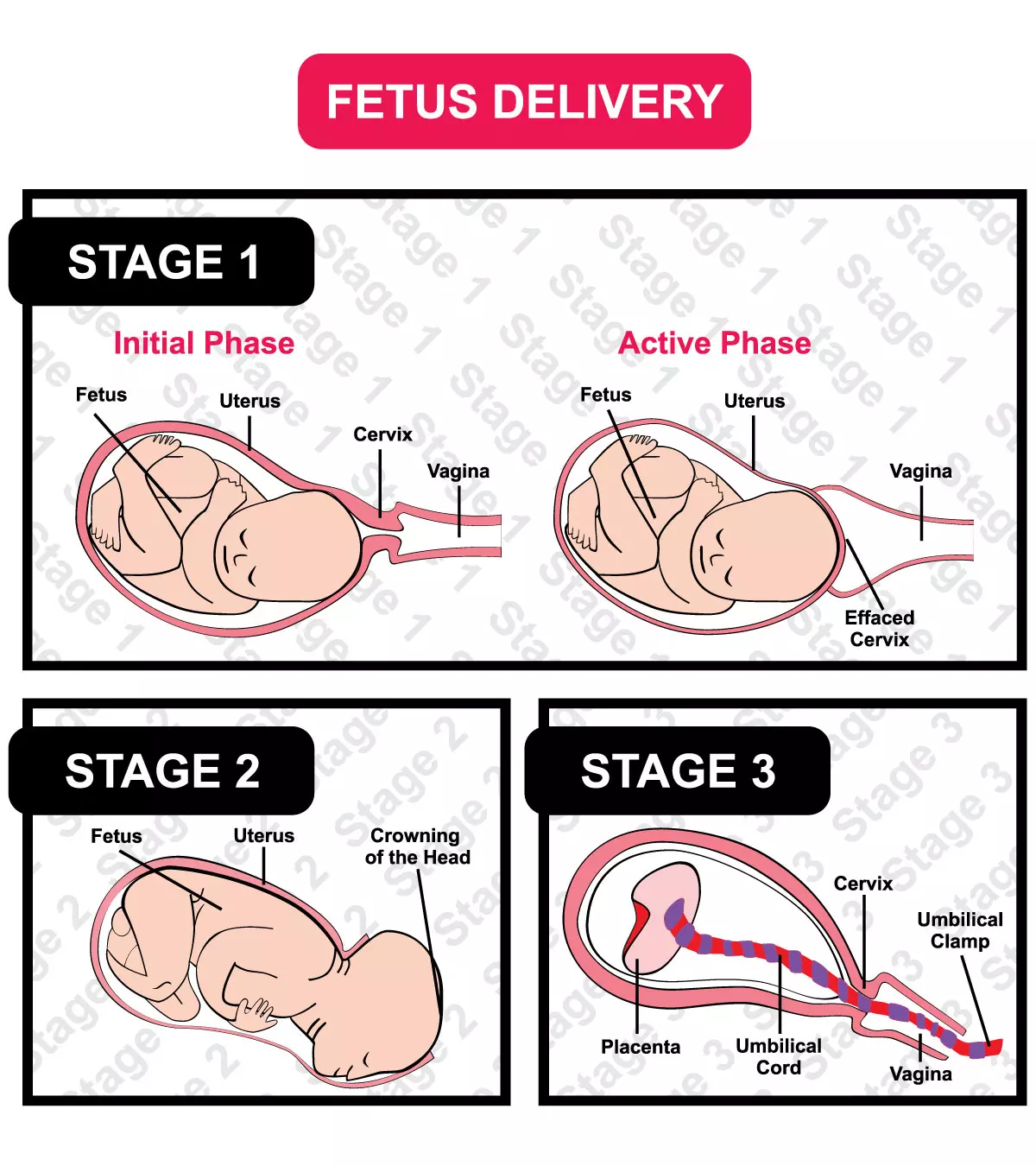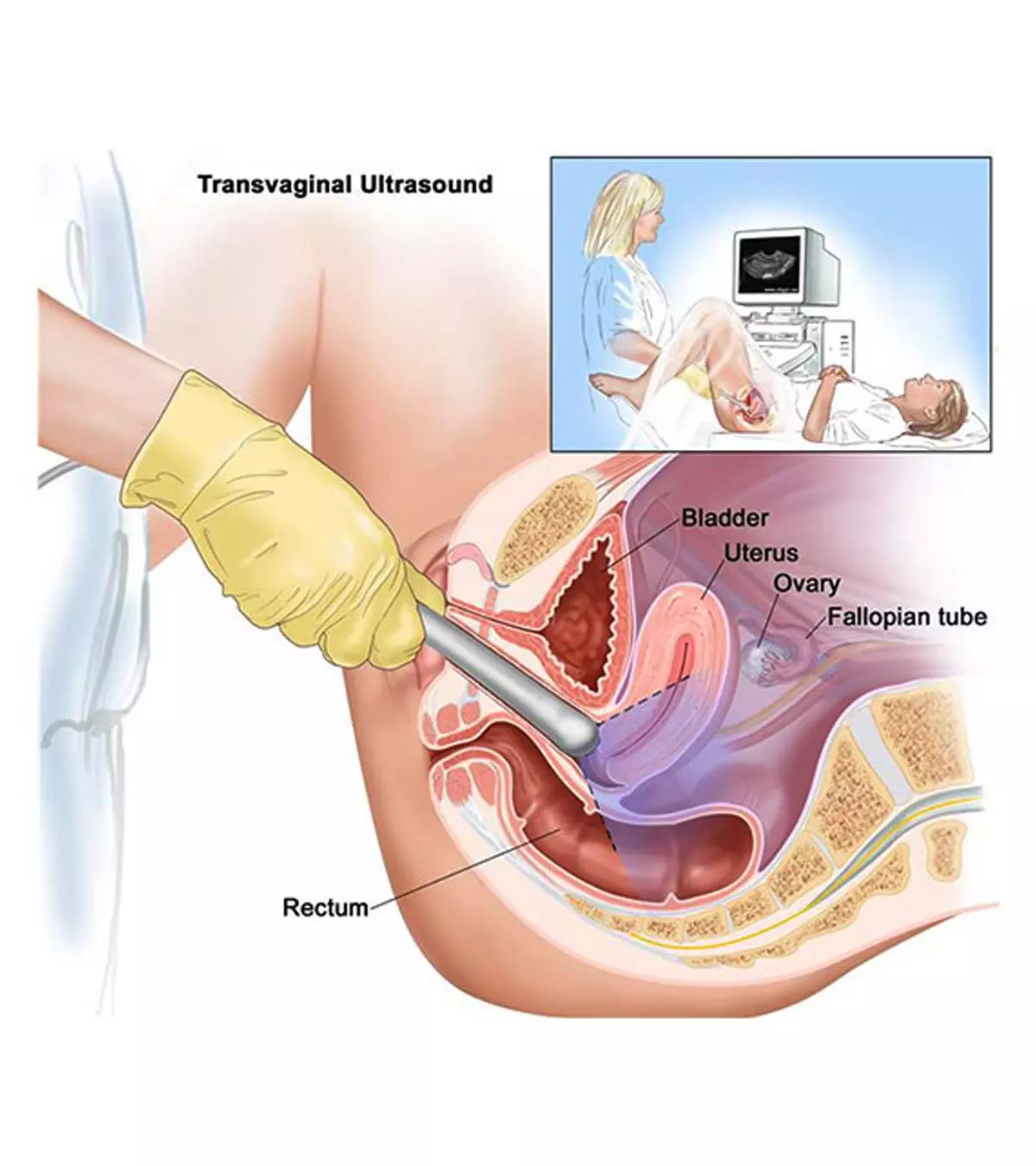
Image: Shutterstock
The initial days of parenting may be overwhelming because of the several changes on the baby’s arrival. Also, most parents are not well-informed about managing infant and newborn problems, which leads to more anxiety.
Newborns are delicate and do not have a completely developed immune system. Therefore, they are at risk of getting infections frequently. If these infections are ignored at the right time, they may lead to complications. So, parents need to know about the common issues related to infants and ways to manage them.
This post provides you with a list of common infant problems and ways to deal with them.
Key Pointers
- Infants have a higher susceptibility to infections due to their developing immune systems.
- It is typical for newborn babies to experience birth injuries, bluish skin, and skin problems that usually resolve over time.
- Newborn babies may have swollen bellies due to constipation, gas, or a severe underlying condition.
- Common issues in newborns include coughing, vomiting, jaundice, and fever.
- Newborns may also have respiratory distress due to nasal passage blockage.
- If any issue appears prolonged or the baby seems to be in severe distress, it’s crucial to consult a pediatrician right away.
Common Newborn Baby Problems
When it comes to health problems, the newborn stage is the most critical. Here are a few health conditions that are fairly common in newborns:
1. Abdominal Distension:
Most newborns have protruding bellies. But if your baby’s belly feels hard and swollen in between feeds, do some sleuthing. Nine times out of 10, it will be just gas or constipation, but sometimes a swollen belly can indicate a serious underlying condition (1).
When to seek medical attention: If the distension is severe, persistent, or accompanied by vomiting or fever.
2. Birth Injuries:
A difficult labor can leave your newborn with some birth injuries. Most newborns recover quickly from these injuries, so don’t stress about it. Some common birth injuries your infant may encounter are a broken collarbone, muscle weakness, forceps marks, skin marks, and disturbed head formation (2).
When to seek medical attention: Consult a doctor if injuries seem severe, cause long-term pain, or interfere with movement or feeding.
3. Bluish Skin:

Image: Shutterstock
Baby skin problems include bluish skin. It is pretty normal for babies to have blue hands and feet, but this may not be a cause of concern. In some cases, newborns can also develop blueness around their mouth and tongue while crying. But the blueness goes away with time. But if your baby does not get her pink skin back, you need to consult your doctor immediately.
When to seek medical attention: Seek immediate medical help if the blueness does not fade or if it extends beyond the hands and feet.
4. Coughing:
It is normal for a baby to cough when she is feeding as sometimes the milk can come in too fast. But if your baby has a cough that refuses to go away or if she often gags during feeding see a doctor. It may indicate a problem with the lungs or the digestive system. If your little one is coughing incessantly, especially at night, you’ll also need to rule out whooping cough (3).
When to seek medical attention: Consult a doctor if the coughing lasts for more than a few days or is accompanied by difficulty breathing or a high fever.
5. Jaundice:
Jaundice is a common problem among newborns. A narrative review by the University of Oslo revealed that 60% to even more than 90% of newborns have been reported to develop jaundice.
Many infants have high bilirubiniAn orange-yellow substance produced as a byproduct of the red blood cells breakdown and found in bile. levels at birth as their livers are still immature. Most cases of newborn jaundice resolve with time. But it can also cause serious problems. So, let your doctor prescribe a treatment to cure jaundice. An earlier theory that neonatal jaundiceiJaundice in babies younger than 28 days of age. causes brain damage proved to be a false alarm (4).
Shelley Wenger, a mother and blogger, reminisces about her experience when her eldest child was diagnosed with jaundice shortly after birth, “My first son, Cody, was diagnosed with jaundice… He was placed under three sets of lights due to the severity of his problem. He was only allowed out to eat. We couldn’t even hold him for the first few days of his life. After five days, we were able to go home, though I made sure to put him in the sunlight daily, to keep the problem from returning (i).”
 Things to know
Things to knowWhen to seek medical attention: Seek immediate medical care if jaundice worsens or does not improve.
6. Respiratory Distress:
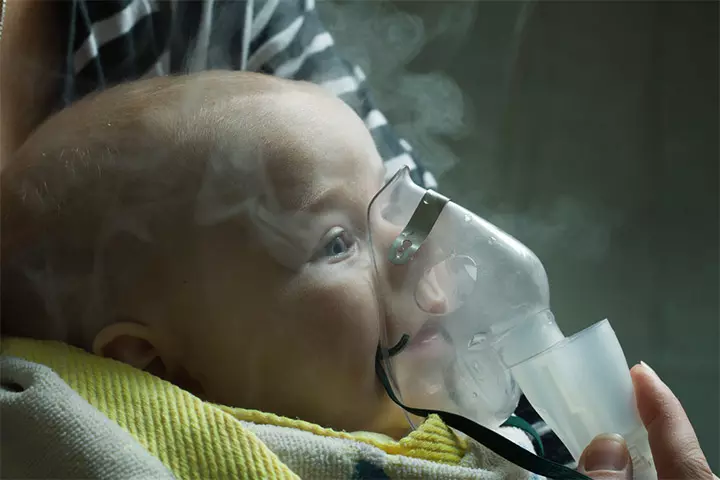
Image: Shutterstock
It takes a newborn a few hours to breathe normally. But once her body learns to breathe, she should have no more respiratory issues. Breathing problems in babies happen due to many issues. If you notice your baby is having difficulty in breathing, check her nasal passage. In most cases, difficulty in breathing occurs due to a blockage in the nasal passages. You can treat this problem with the use of saline drops.
But if you notice any of the following symptoms, go see your pediatrician immediately:
- Rapid breathing
- Flaring of her nose
- Grunting while breathing
- Blue skin color that refuses to fade
If you had preterm labor, your baby is at a higher risk of developing respiratory distress.
When to seek medical attention: If you notice rapid breathing, nostril flaring, grunting, or if the skin remains blue.
7. Vomiting:
Vomiting is a common health problem among infants. It is normal for infants to spit up milk after feeding. But frequent vomiting is not normal. To prevent frequent vomiting and spit-ups, make sure your baby is not lactoseiA sugar present in milk and its products. intolerant or allergic to breast milk. You also need to burp your baby frequently to prevent her from throwing up her entire meal. If your child is vomiting and not gaining adequate weight, she might need medical intervention. Also, watch out for the color. If your baby’s vomit looks green, talk to your doctor about possible infections and treatment options (5). Digestive issues or gastrointestinal issues like reflux could also lead to vomiting.
When to seek medical attention: Consult a doctor if vomiting is persistent, greenish in color, or accompanied by poor weight gain or dehydration.
8. Fever:
A fever is not the problem. A fever is just an indicator that your baby’s body is fighting off an infection. Mild fevers don’t even need medical intervention. But if your little one is running a high fever, let your doctor have a look at her. High fever (102 F) can be a cause of serious worry and lead to seizures (6).
When to seek medical attention: Seek medical care if the fever is above 102°F or if your baby experiences seizures.
9. Colic:

Image: IStock
Is your little one crying without a break, and you can’t figure out why? You can blame it on colic! Colicky babies are otherwise healthy and show no other signs of discomfort. Do check if your baby is allergic to the formula you are using as that too can cause colic in babies (7). Thankfully, most cases of colic in babies resolve by the time your baby reaches three months of age.
When to seek medical attention: See a doctor if the crying is accompanied by feeding difficulties, vomiting, or changes in bowel movements.
10. Skin Problems:
Infants and babies have sensitive skin. So it is common for them to experience skin problems. Some of the common skin problems your baby may encounter include:
A. Diaper Rash:
One of the more common skin problems is baby diaper rash (8). To prevent this common yet painful condition, keep the following points in mind:
- Be regular when it comes to changing your baby’s diaper. Change the diaper every four hours even if it is not soiled.
- Use a diaper rash cream in case your baby develops a rash.
- If you are using a cloth diaper, use fragrance and dye-free detergents.
B. Cradle Cap:
Cradle cap too is a common skin problem among babies (9). If your baby has developed a cradle cap, do not worry. Try these methods to manage it.
- Wash the baby’s hair every day
- Use a mild shampoo.
C. Baby acne
Newborns often experience a skin condition known as baby acne. Some babies have pimples or blemishes from birth, while others develop acne in the first few weeks of life (10). The good news is that baby acne is usually harmless and tends to clear up on its own without needing any treatment. However, if a healthcare provider suggests treatment, it might involve:
- A topical steroid like hydrocortisone with low potency
- Ketoconazole, an antifungal cream
These can be applied to the baby’s skin like a regular lotion, following the healthcare provider’s instructions on the frequency of application.
D. Baby Eczema
Eczema is a frequent skin issue that impacts infants and young kids. It leads to itchy, dry, and bumpy patches on the baby’s skin. This occurs because the protective barrier on the outer layer of their skin is not strong enough, causing it to function improperly. The face is the most common area where eczema symptoms manifest in babies (11). Treatment may include:
- Using prescribed ointments containing corticosteroids
- Eliminating triggers of eczema
- Applying fragrance-free moisturizers
Once treatment starts, you might notice an improvement in your baby’s symptoms within a few days. However, it could take a few weeks for your baby’s skin to fully heal.
 Quick fact
Quick factWhen to seek medical attention: Consult a doctor if skin conditions worsen, become infected, or cause significant discomfort.
11. Cold And Flu:
Some infections are common among infants and babies. Viral infections like cold and flu are normally harmless and go away without playing much havoc with your baby’s health. But for infants, a simple cold can turn into pneumoniaiA bacterial or viral infection causing inflammation in the air sacs. , a very serious medical condition (12). So, it is important to see your doctor, even if your baby has a harmless cold.
When to seek medical attention: Seek medical care if the cold worsens, affects breathing, or persists for several days.
12. Ear Infections:

Image: Shutterstock
Ear infections are also extremely common among little ones. If your infant or baby is tugging at her ear, is fussier than usual, or has trouble hearing with no indication of hearing loss, she may have an ear infection (13). Viral infections go away once they run their course, but bacterial infections may need a dose of antibiotics.
When to seek medical attention: If the fussiness is persistent or if there is discharge from the ear.
13. Oral Thrush:
Oral thrush in babies is another infection to look out for. When yeast takes over your baby’s mouth, she’ll be diagnosed with oral thrushiA non-contagious fungal infection characterized by white-red lesions on the inner surfaces of the mouth. . Talk to your pediatrician and see if your little one needs a prescription for antifungal medication (14).
When to seek medical attention: See a pediatrician if oral thrush does not improve or if it affects feeding.
14. Diarrhea:
Diarrhea is also common among infants and babies. As long as you keep your baby hydrated (15), you need not worry about diarrhea. Continue breastfeeding and start giving an ORS solution prepared at home.
When to seek medical attention: If diarrhea persists for more than a day or causes dehydration signs like dry mouth or fewer wet diapers.
15. Constipation:

Image: IStock
Is your baby straining while passing stool? She may be suffering from constipation! Common among babies (16), constipation is not a big health issue unless it is causing your little one acute discomfort.
When to seek medical attention: Consult a doctor if the baby shows signs of severe discomfort, strain, or if constipation persists for several days.
Moreover, infants at high risk, including those born prematurely, with congenital disorders (birth defects), genetic disorders, or had an abnormal birth, face an elevated likelihood of developing various issues such as sleep apnea, vision problems, developmental delays, hypotonia, congenital heart defects, or neural tube defects.
Parental Guidance For Newborn Care
Caring for a newborn can be overwhelming, but establishing a routine and recognizing your baby’s needs can make the process easier. Here are some tips for new parents:
1. Establish a routine
Create a consistent routine for feeding, sleeping, and diaper changes to help your baby feel secure and help you stay organized.
2. Recognize signs of discomfort
Learn to identify signs like crying, restlessness, or clenching fists, which may indicate discomfort from hunger, a wet diaper, or gas.
3. Soothing a crying baby
Check if your baby is fed, dry, and comfortable. Try rocking, swaddling, or using a pacifier, and use white noise or soft music to calm them.
4. Bonding time
Hold and cuddle your baby regularly to build a strong emotional connection, with skin-to-skin contact being especially beneficial.
5. Trust your instincts
Trust your own judgment and learn your baby’s needs over time. Don’t hesitate to seek advice if you’re concerned about their health.
Frequently Asked Questions
1. What are the three most common illnesses in newborns?
The most common illnesses that affect newborns are coughs, colds, and fevers. These illnesses can be treated at home if they are mild but may require medical care if they aggravate (17).
2. How do I take care of high-risk babies?
Newborns with a history of premature birth or low birth weight are considered high-risk babies and require specialized neo-natal care, including thermal protection, exclusive breastfeeding, and timely immunization (18). Depending on your baby’s specific needs, your doctor may advise you on the best way to care for them.
3. What are the danger signs in newborns?
Some danger signs to be wary of in newborns are high fever, continuous vomiting, breathing difficulties, hypothermiaiA significant drop in body temperature. , lethargy, yellowish skin, and poor feeding (19).
4. How can I recognize if my baby is developing normally?
Although each baby develops at their own rate, common signs of healthy growth include:
- Making eye contact and tracking objects with their eyes
- Reacting to sounds and voices
- Starting to lift their head when on their stomach
- Smiling and cooing by six to eight weeks
- Gaining motor skills like rolling over, sitting up, or supporting their head
If you observe any delays in these milestones, it’s important to consult a pediatrician (20).
As a parent, you may encounter various infant and newborn problems, which may seem overwhelming. However, most of these problems are temporary, and your children overcome them as they grow up and develop immunity. All you need to do is keep yourself informed and follow the correct treatment techniques to get through their issue in a shorter time. So whether your child experiences abdominal distension, birth injury, or jaundice, get help from your doctor. Take proper care and help your child recover fast. Amid the newborn problems, remember to stay calm and enjoy their childhood. Do not waste your precious moments worrying about their issues.
Infographic: Common Conditions In Infants And Newborns
Some physical conditions may appear in babies in the first few weeks of life. However, it is important to identify warning signs early to avoid any health issues. It is best to consult a pediatrician whenever in doubt. The infographic below lists some common conditions seen in newborns and infants.

Illustration: Momjunction Design Team
Illustration: Most Common Infant And Newborn Problems
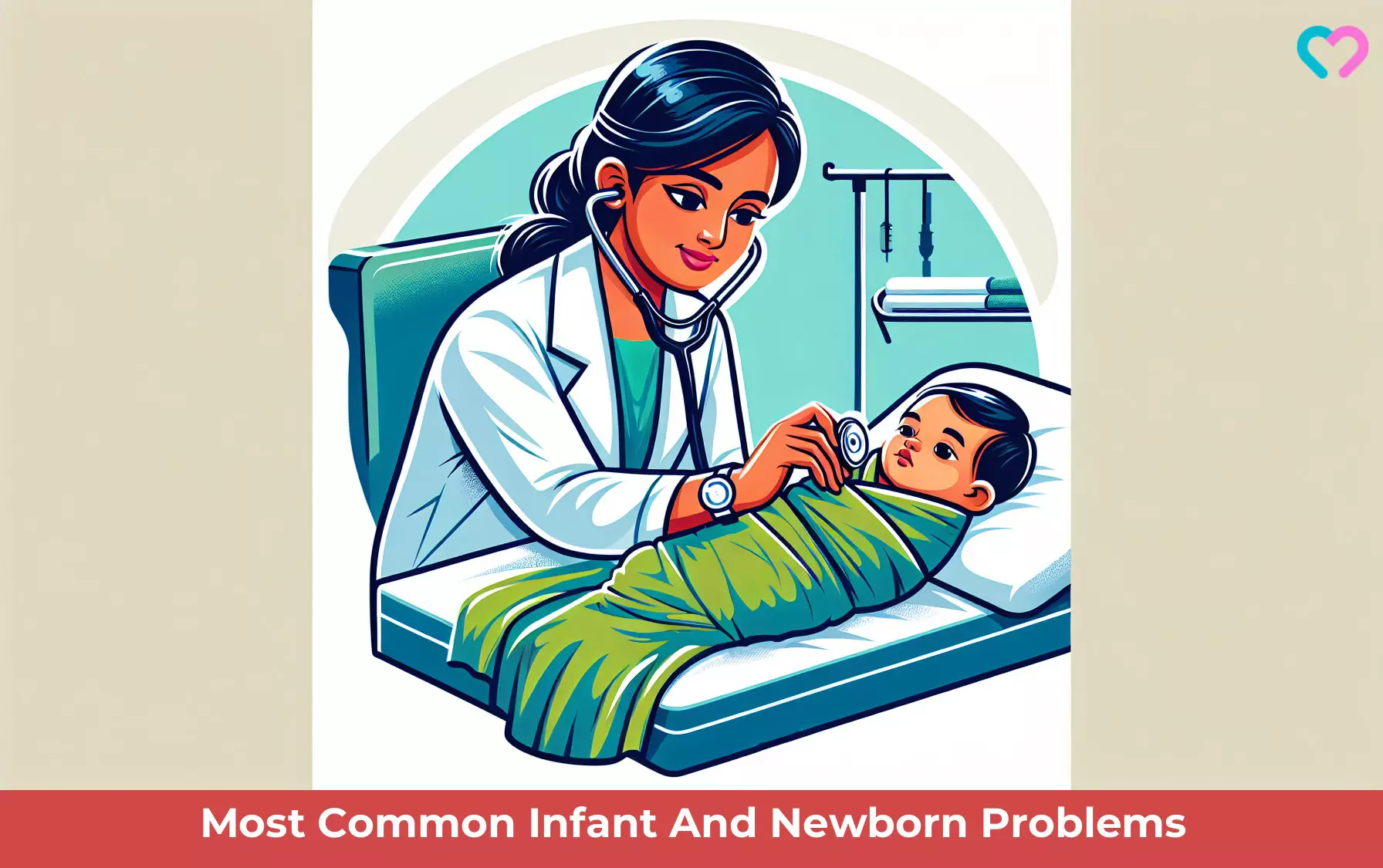
Image: Dall·E/MomJunction Design Team
Learn the warning signs to look out for in babies – fussiness, difficulty feeding, changes in breathing, and more so that you can be ready with treatment measures right away.
Personal Experience: Source
MomJunction articles include first-hand experiences to provide you with better insights through real-life narratives. Here are the sources of personal accounts referenced in this article.
i. When You Have a Sick Child.https://medium.com/@shelleywenger/when-you-have-a-sick-child-66a6f9757276
References
- An Chen et al.; (2013); Clinical characteristics of abdominal distention in early newborns.
https://pubmed.ncbi.nlm.nih.gov/24342199/ - M Camus et al.; (1985); Obstetrical injuries of the newborn infant. Retrospective study apropos of 20409 births.
https://pubmed.ncbi.nlm.nih.gov/3833902/ - Frequently asked questions about whooping cough.
https://doh.wa.gov/you-and-your-family/illness-and-disease-z/whooping-cough/whooping-cough-faq - Risk of Brain Disorder Rare in Healthy Newborns with Jaundice.
https://www.ucsf.edu/news/2015/01/122586/risk-brain-disorder-rare-healthy-newborns-jaundice - Gregor M Walker et al.; (2006); Colour of bile vomiting in intestinal obstruction in the newborn: questionnaire study.
https://www.ncbi.nlm.nih.gov/pmc/articles/PMC1476724/ - Fever in children.
https://www.nhsinform.scot/illnesses-and-conditions/infections-and-poisoning/fever-in-children - B W Forsyth et al.; (1985); Problems of early infancy formula changes and mothers’ beliefs about their infants.
https://pubmed.ncbi.nlm.nih.gov/3998939/ - Diaper Dermatitis.
https://www.ncbi.nlm.nih.gov/books/NBK559067/ - Cradle Cap (Seborrheic Dermatitis in Infants).
https://my.clevelandclinic.org/health/diseases/15786-cradle-cap-seborrheic-dermatitis-in-infants - Baby Acne
https://my.clevelandclinic.org/health/diseases/17822-baby-acne - Baby Eczema
https://my.clevelandclinic.org/health/diseases/23408-baby-eczema - What Is Pneumonia?.
https://www.nhlbi.nih.gov/health/pneumonia - Ear Infections in Children.
https://www.nidcd.nih.gov/health/ear-infections-children - Thrush and Other Candida Infections.
https://www.healthychildren.org/English/health-issues/conditions/infections/Pages/Thrush-and-Other-Candida-Infections.aspx - C G Victora et al.; (1989); Infant feeding and deaths due to diarrhea. A case-control study.
https://pubmed.ncbi.nlm.nih.gov/2705424/ - Vera Loening-Baucke; (2005); Prevalence symptoms and outcome of constipation in infants and toddlers.
https://pubmed.ncbi.nlm.nih.gov/15756220/ - Common Infant and Newborn Problems.
https://medlineplus.gov/commoninfantandnewbornproblems.html#:~:text=Common%20health%20problems%20in%20babiessigns%20for%20more%20serious%20problems. - Newborns: improving survival and well-being.
https://www.who.int/news-room/fact-sheets/detail/newborns-reducing-mortality - Tewodros Yosef et al.; (2020); Knowledge of Neonatal Danger Signs and Its Associated Factors among Mothers Attending Child Vaccination Centers at Sheko District in Southwest Ethiopia.
https://www.ncbi.nlm.nih.gov/pmc/articles/PMC7273486/ - Well-Baby Care Visits & Developmental Milestones (Age 0-12m)
https://my.clevelandclinic.org/health/articles/22063-baby-development-milestones-safety - Overview; Newborn jaundice.
https://www.nhs.uk/conditions/jaundice-newborn/#:~:text=Jaundice%20in%20newborn%20babies%20isin%20brown%20or%20black%20skin. - Seborrheic Dermatitis (Cradle Cap).
https://www.nationwidechildrens.org/conditions/cradle-cap
Community Experiences
Join the conversation and become a part of our nurturing community! Share your stories, experiences, and insights to connect with fellow parents.
Read full bio of Dr. Neha Mehta
Read full bio of Jessica Albert
Read full bio of Dr. Ritika Shah
Read full bio of Vidya Tadapatri

















